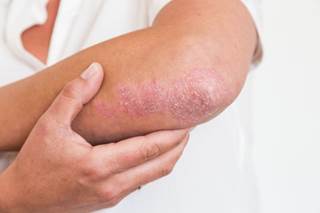
Investigators evaluated the effect of ixekizumab withdrawal and retreatment in Japanese patients with plaque psoriasis in this single-arm open-label phase 3 study.
In a cohort of Japanese patients with plaque psoriasis who exhibited an initial response to ixekizumab, approximately half of the patients relapsed within 5 months of treatment withdrawal. Most of these patients subsequently recaptured their responses within 12 weeks, and that response was maintained for up to 120 weeks of retreatment. The results of the single-arm open-label phase 3 study (UNCOVER-J; ClinicalTrials.gov identifier: NCT01624233) were published in the Journal of the European Academy of Dermatology and Venereology.
The investigators sought to evaluate the clinical course after ixekizumab treatment withdrawal and retreatment and the efficacy of retreatment with ixekizumab in Japanese patients with plaque psoriasis. Efficacy measures included the percentage of patients attaining baseline reduction in the Psoriasis Area and Safety Index of 75% (PASI 75), 90% (PASI 90) and 100% (PASI 100); percentage of patients achieving Static Physician Global Assessment 0, 1, and 0; time to relapse (ie, loss of response: PASI ≤50) after ixekizumab withdrawal in patients with a PASI 75 response at week 52; change from baseline in PASI scores; Dermatology Life Quality Index; and Psoriasis Scalp Psoriasis Index (in patients with scalp psoriasis at baseline).
Safety measures included drug-free emergent adverse events (AEs), treatment-emergent AEs, AEs of special interest, serious AEs, AEs that led to treatment discontinuation, and immunogenicity.
A total of 78 patients with plaque psoriasis were enrolled in the study. After ixekizumab treatment (ie, 160-mg loading dose, 80 mg every 2 weeks for the first 12 weeks, and then 80 mg every 4 weeks until week 52), 70 participants attained a PASI 75 response at week 52. These 70 patients were then withdrawn from ixekizumab therapy from week 52 through week 100. The participants who relapsed (PASI ≤50) during the treatment withdrawal period were retreated with 80 mg of ixekizumab every 4 weeks for 192 weeks.
At weeks 52, 76, and 100, PASI 75 response rates were 100%, 26%, and 7%, respectively; PASI 90 response rates were 87%, 11%, and 3%, respectively; and PASI 100 response rates were 53%, 0%, and 0%, respectively. After treatment withdrawal, 87% of patients relapsed, with a median time to relapse of 143 days.
After12 weeks of retreatment with 80 mg of ixekizumab every 4 weeks, 83% of relapsed patients attained PASI 75, 68% attained PASI 90, and 25% attained PASI 100. The improvements were maintained for up to 120 weeks of retreatment.
Treatment-emergent AEs and serious AEs were reported in 56% and 4% of patients, respectively, during the treatment withdrawal period and in 88% and 14% of patients, respectively, during the retreatment period.
The investigators concluded that in patients who were withdrawn from ixekizumab after attaining PASI 75, approximately half relapse within 5 months of withdrawal. Most of these patients recaptured their response within 12 weeks, though, and that response was maintained for up to 120 weeks of retreatment. Interrupted ixekizumab treatment was well tolerated.
The main limitations of this study included the lack of a control group, its open-label design, and that the analysis was conducted in Japanese patients only, with a relatively small sample size.
Reference
Umezawa Y, Torisu-Itakura H, Morisaki Y, et al; Japanese Ixekizumab Study Group. Long-term efficacy and safety results from an open-label phase III study (UNCOVER-J) in Japanese plaque psoriasis patients: impact of treatment withdrawal and retreatment of ixekizumab [published online October 16, 2018]. J Eur Acad Dermatol Venereol. doi:10.1111/jdv.15292




